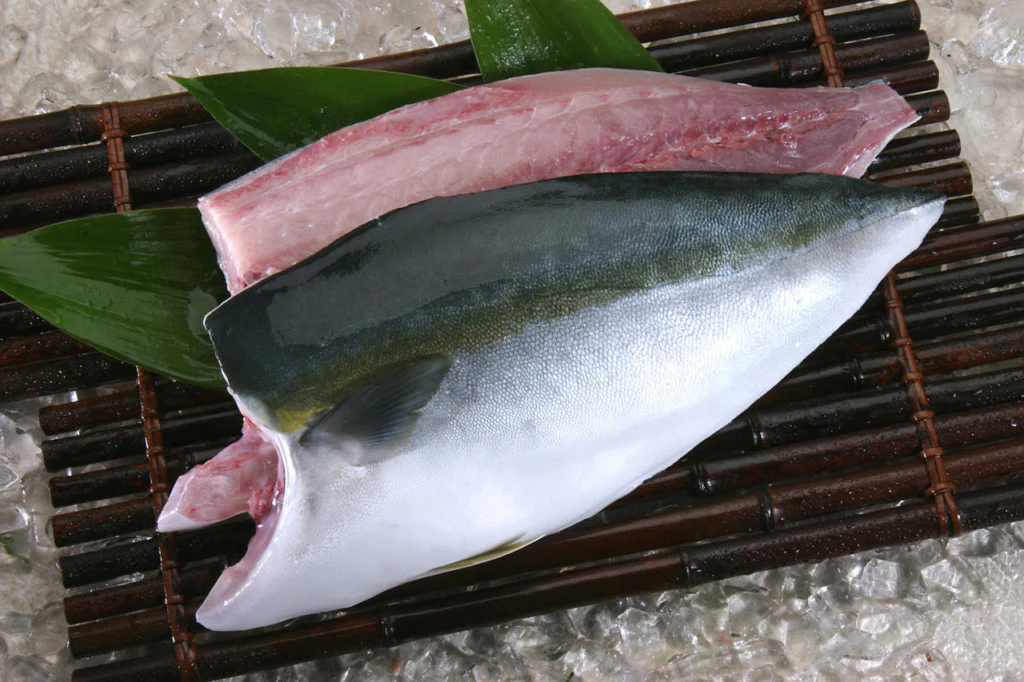Not many seafood names can boast as much grace and as much refined taste as Hamachi. With its rich flavour, buttery texture, and prominence in Japanese cuisine, this fish has earned a place of honour in high-end restaurants and sushi bars around the world. But what is Hamachi fish, and why is the reason it so loved?
What is Hamachi?
Hamachi pertains to immature Japanese amberjack, a jack fish species native to the warmer areas of the Pacific Ocean. The scientific name is Seriola quinqueradiata; its family is the same as that of yellowtail but differs in classification and naming regarding age and size.
- As a difference, conventions on naming are highly specified in
- Hamachi refers to fish which are still young (between 2 and 3 kg in weight).
- Buri refers to complete amberjack (from five kilograms onwards).
This system of naming is called the Shusseuo. It is a cultural way of designating a fish’s name as it progressively matures, which implies a higher position and quality over time.
Taste and Texture
Hamachi is best known for:
- Mild clean flavour that is not very fishy
- Creamy, buttery texture like that of melting in your mouth
- Slight undertones of sweetness that balance very well with soy and citrus
It is sought-after for raw preparations such as sushi and sashimi because of its buttery richness; the belly cut in particular is said to be beautifully smooth and luxuriously mouth-filling.
Nutrition Profile
Apart from its great taste, Hamachi has several health benefits. A 3-ounce (85g) portion typically provides:
- Protein: 20-22 grams
- Fat: 8-10 grams (mostly healthy fat)
- Omega-3 fatty acids: 500-1000 mg
- Calories: Around 200 kcal
It also contains important micronutrients like vitamin D, selenium, and vitamin B12 which are needed for brain function, immunity, and cardiovascular health.
Best Application
Hamachi is a versatile fish and can be enjoyed in a variety of preparations. The most brilliant and shiny spectacles of this fish are shown in Japanese cuisine. Here are a few of the most enjoyable ways of experiencing it:
1. Sashimi
Raw slices of hamachi are usually served with soy sauce, wasabi, and pickled ginger. It offers the best textural experience and taste in this form.
2. Nigiri Sushi
Sliced fish on very little vinegared rice on a disk, sometimes lacquered with a brush of soy or dabbed with wasabi.
3. Hamachi Kama
Grilled collar of the fish; it is a delicacy. Tender, juicy, and usually served with just a bit of citrus or ponzu sauce.
4. Tataki
Lightly seared fish served with a soy-citrus sauce. The flavour is enhanced outside but retains its rawness inside.
5. Ceviche and Crudo
Hamachi also features in fusion dishes; marinated in acidic liquids or served raw with olive oil and herbs.
Farming and Sustainability
By aquaculture, much of the Hamachi consumed worldwide is produced. The Japanese have cultivated this fish in the southern regions, especially in Kyushu, for centuries.
Typical farming methods vary, but trustworthy producers emphasize the following:
- Low-density cages
- Sustainable feed sources
- Minimal antibiotic use
Yet, several worries arise regarding environmental effects. This is why it is important to look for certification or simply buy from reputable suppliers operating with sustainable practices.
Hamachi that is genuinely wild-caught is rare and more expensive. It is generally available during the colder months when the fish is fatter.
Selecting Hamachi and Storing
When purchasing Hamachi, whether fresh or frozen, the following rules should be followed:
Colour: Light pink, translucent, to light red, is the colour to be accepted. Not dull, with brownish hues.
Smell: Oceanish-clean but slightly salty; should not smell fishy.
Touch: Fresh fish feels firm and bouncy upon pressure.
Storage: Keep fresh pieces at the very back of the fridge cavity and consume within 24-48 hours.
If frozen, put it in the fridge overnight to slow-thaw before using. Now:
Is Hamachi Synonymous with Yellowtail?
This is a source of constant confusion. In English-speaking countries, there are several different species of the same family, Seriola being called under the name yellowtail. However, in Japan:
- Hamachi/Buri=Japanese amberjack (Seriola quinqueradiata)
- Hiramasa=Yellowtail kingfish (Seriola lalandi)
- Kanpachi=Greater amberjack (Seriola dumerili)
Cooking at Home
The boom in sushi-grade products and online seafood suppliers made it possible to prepare Hamachi dishes even at home. Here are a few tips for house cooks:
- Slicing sashimi with a very sharp knife.
- Cool the fish until immediately before serving.
- Pairing with citrus-based sauces, pickled vegetables, or fresh herbs, such as shiso or cilantro.
Conclusion
It entails much more than just a sushi treat. Hamachi is a true representation of quality, craftsmanship, and gastronomic art. This fish enjoys consumption in all forms-whether raw, grilled, or seared, it delivers rich, satisfying experiences with price-for-cha and balanced nutrition. Not to forget, with smooth flavour, impressive health benefits, and cultural depth, Hamachi has all it takes to earn itself a place as a gourmet seafood staple.
FAQs
1. Can Hamachi be eaten raw without risk?
Yes, if it is classified as sushi- or sashimi-grade, it is safe to eat raw. Purchase from trustworthy seafood vendors intended for raw consumption.
2. What differentiates Hamachi from Buri?
Both names denote the same species (Seriola quinqueradiata): Hamachi denotes the juvenile fish, while Buri refers to mature adults. Buri has a richer flavour and higher fat content.
3. Is Hamachi heavily contaminated with mercury?
Like many larger fish, moderate mercury contamination is possible. It is safe to eat in moderation, but pregnant women and young children should avoid it.
4. How will I recognise fresh Hamachi?
Fresh fish has a mild ocean scent as well as pink and firm flesh. Any dullness in colouration or a strong smell could indicate it’s not fresh.
5. Is it possible to freeze Hamachi?
Yes. If Hamachi has never been frozen prior, it can be stored in the freezer for two months. Thawing should be done slowly in the fridge to retain texture and flavour.


